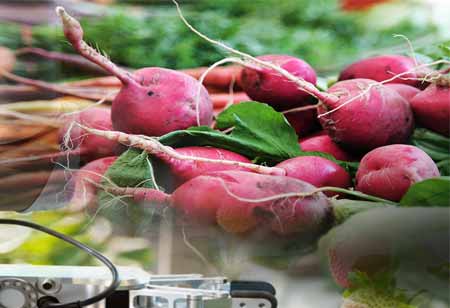THANK YOU FOR SUBSCRIBING
Be first to read the latest tech news, Industry Leader's Insights, and CIO interviews of medium and large enterprises exclusively from Food and Beverage Tech Review
The Circular Economy for a Resource-Efficient Food System
Food waste impacts one-third of global production, requiring circular economy strategies like supply chain forecasting, innovative packaging, and consumer education for sustainable food systems.

By
Food and Beverages Tech Review | Thursday, June 20, 2024
Stay ahead of the industry with exclusive feature stories on the top companies, expert insights and the latest news delivered straight to your inbox. Subscribe today.
Food waste impacts one-third of global production, requiring circular economy strategies like supply chain forecasting, innovative packaging, and consumer education for sustainable food systems.
FREMONT, CA: According to the UN Environment Programme, food waste affects one-third of global food and has significant environmental and social repercussions. It represents a significant loss of sustenance, leading to wasted resources, increased greenhouse gas emissions, and additional pressure on our strained land and water supplies.
The Circular Economy
The circular economy presents a revolutionary approach to resource management by seeking to close the loop on waste generation. In the context of food, this approach represents a paradigm shift from the traditional linear model—grow, consume, discard—to a system that prioritizes prevention, reuse, and resource recovery.
Strategies for Reducing Food Waste in a Circular Economy
Prevention at the Forefront: The most effective solution is to prevent waste from occurring in the first place. This involves improved forecasting in the supply chain, more innovative packaging to extend shelf life, and educating consumers on proper storage and utilization. Initiatives like "ugly fruit" campaigns that promote imperfect but perfectly edible produce are gaining traction.
Rethinking "Waste" as a Resource
Food scraps and byproducts are not seen as discards but as valuable resources. Innovative technologies are transforming "waste" into new products:
Biofuels: Anaerobic digestion utilizes microbes to break down food waste, producing biogas—a renewable energy source. Companies are using this process to convert food scraps into clean-burning transportation fuel.
Fertilizers: Food scraps can be composted into nutrient-rich fertilizers, closing the loop by nourishing the very crops they came from. Businesses are turning food waste into high-quality compost for urban agriculture.
Animal Feed: Food waste unsuitable for human consumption can be transformed into nutritious animal feed through insect farming.
The circular economy offers a multifaceted approach to food waste management, encompassing several innovative strategies. Upcycled food products represent a significant advancement with AI that is crucial in optimizing food systems and minimizing waste. Platforms utilize AI-powered coatings to extend the shelf life of fruits and vegetables, thereby reducing spoilage at both the retail and consumer levels. Additionally, other AI applications predict demand and optimize logistics, ensuring food reaches consumers fresh and minimizing waste throughout the supply chain.
Technology fosters a culture of food sharing through various apps. For instance, Food Connect links businesses with surplus food to charities and food banks, ensuring that edible food reaches those in need. Similarly, meal-sharing platforms allow restaurants to sell surplus prepared food at discounted rates, reducing waste and offering consumers affordable options.
Urban food production and waste integration present exciting possibilities. The growth of vertical and rooftop farms in urban areas facilitates the integration of food production with waste management. Composted food scraps can provide nutrient-rich fertilizer for these urban farms, closing the loop within city limits and promoting local food production.
Collaboration is Key
The circular approach requires a collaborative effort across the food system, involving agriculture, processing, retail, and consumers. Governments are introducing policies incentivizing food waste reduction and supporting innovative businesses in this sector.
The circular economy holds immense promise for tackling food waste. As technology advances and consumer awareness grows, more innovative solutions are expected to emerge. Embracing this approach can create a more sustainable food system that minimizes waste, maximizes resource efficiency, and ensures food security for a growing population.
I agree We use cookies on this website to enhance your user experience. By clicking any link on this page you are giving your consent for us to set cookies. More info







